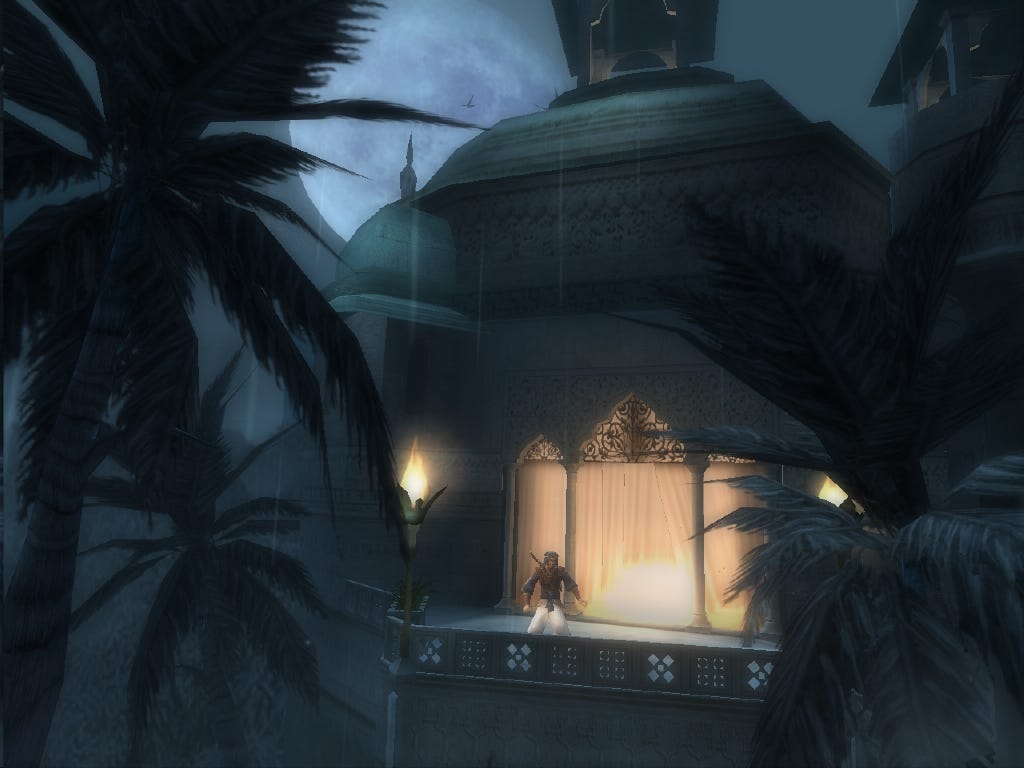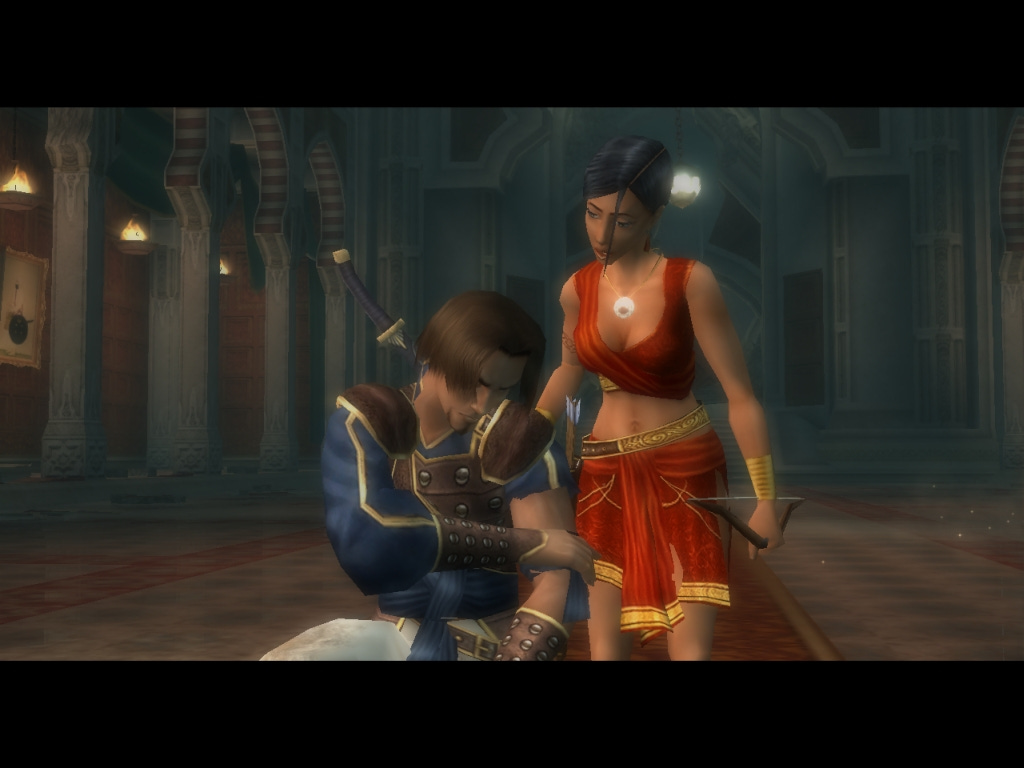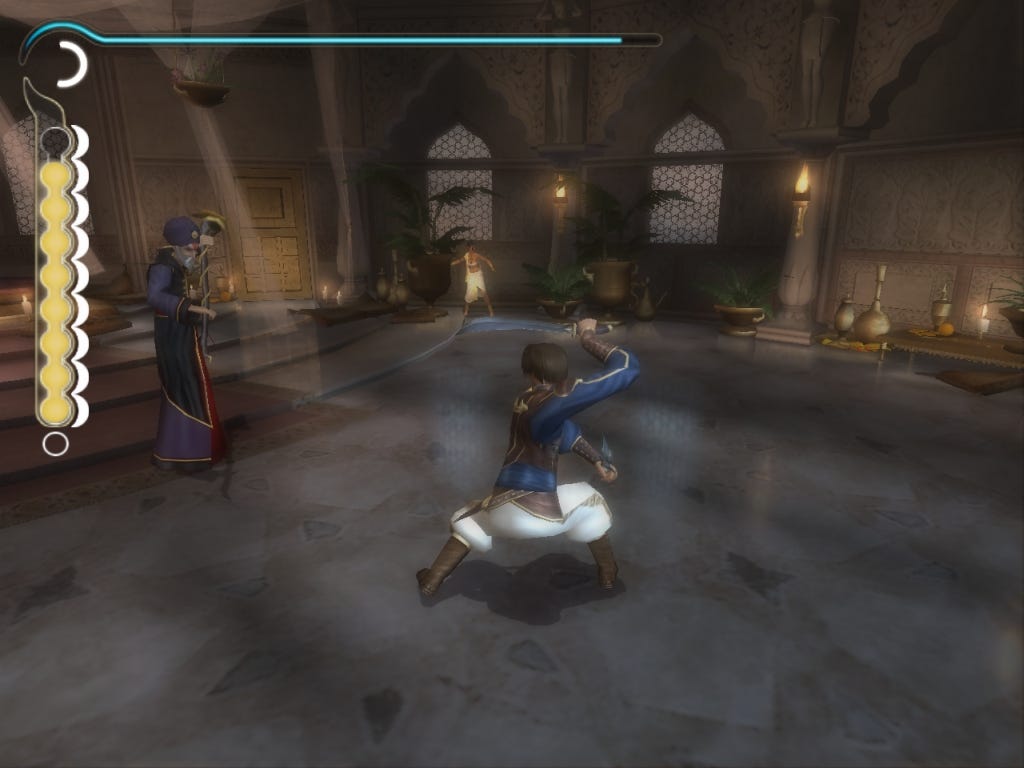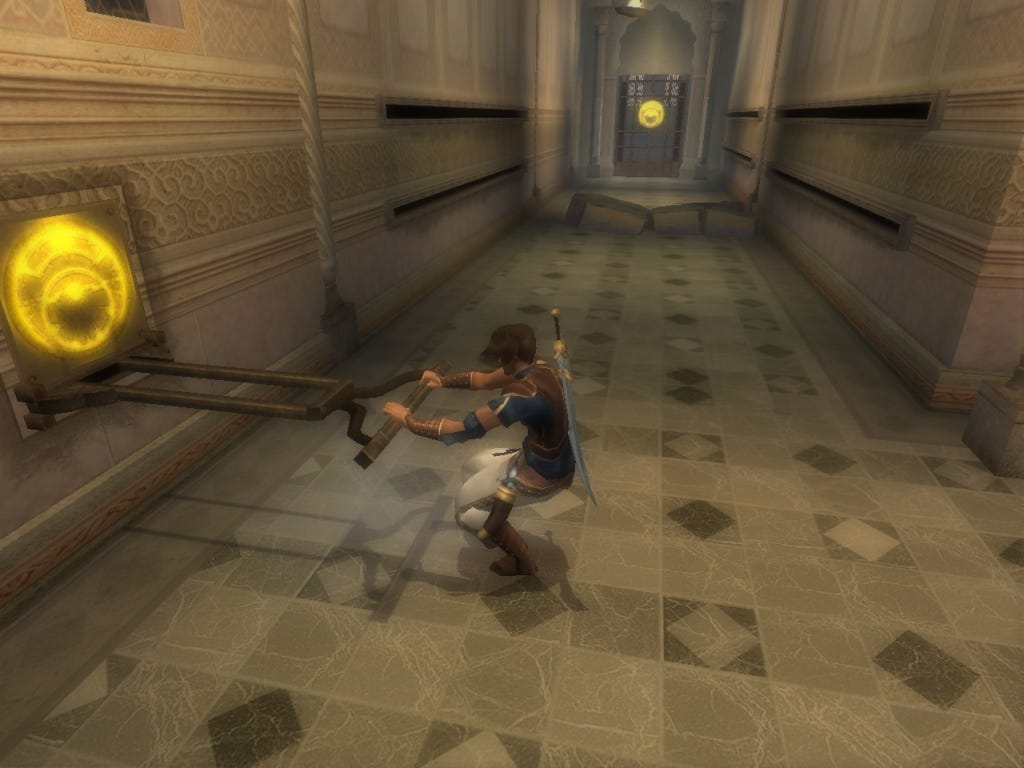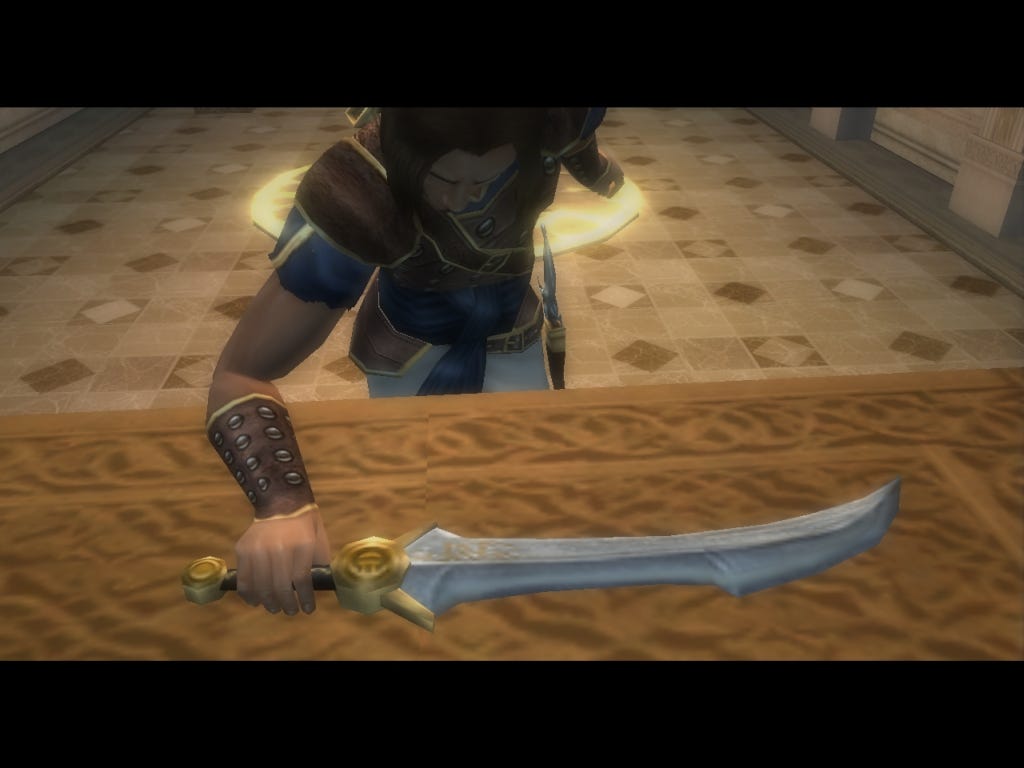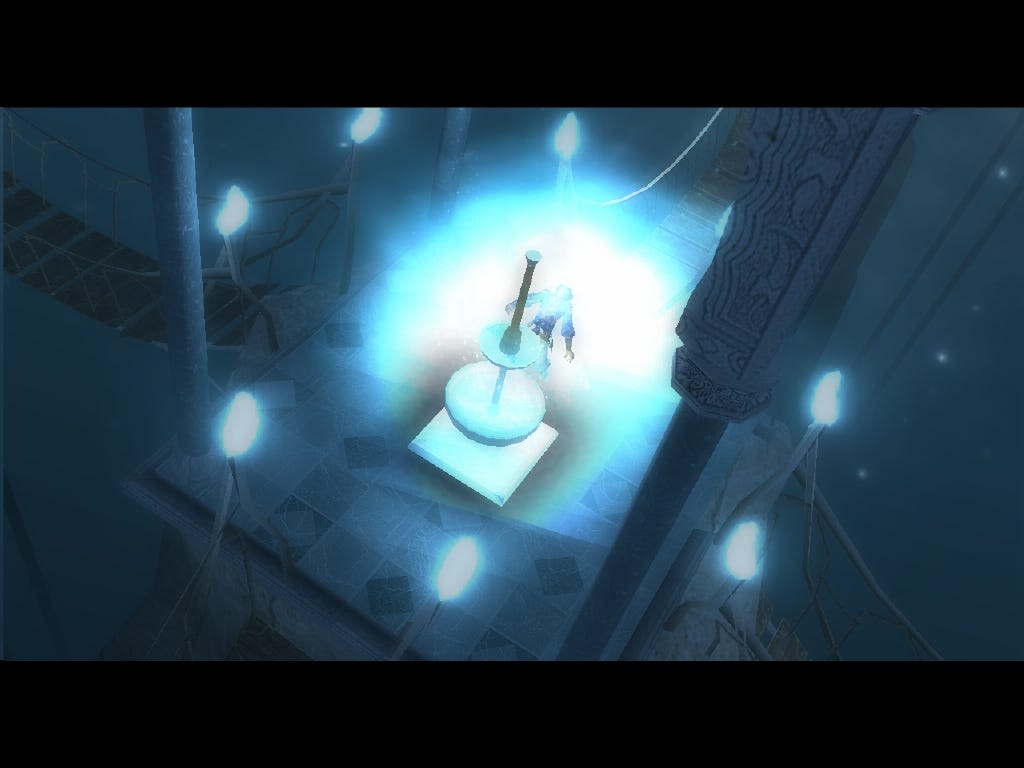Prince of Persia: The Sands of Time Review (Xbox)
It's Valentine's Day and today I am going to talk about one of my favourite games that I adore the most that also has one of my favourite romantic stories.
Developer: Ubisoft Montreal
Publisher: Ubisoft
Release Date: PS2: 10th Novemer 2003 (NA) 21st November 2003 (EU). Xbox/GameCube: 18th November 2003 (NA) 20th February 2004 (EU). PC: 2nd December 2003 (NA) 5th December 2003 (EU)
Platforms: Xbox, PlayStation 2, GameBoy Advance, GameCube, PC
“Most people think time is like a river, that flows swift and sure in one direction. But I have seen the face of time, and I can tell you, they are wrong. Time is an ocean in a storm. You may wonder who I am and why I say this. Sit down, and I will tell you a tale like none that you have ever heard...”
There’s a good handful of games that I love to death and Prince of Persia The Sands of Time is easily one that I am in love with and one that keeps growing fonder as the years go by. I was 14 when I had first played it around a friend’s house on his Xbox after school one day (on the Duke controller too, I remember that well) and I spent a little too long on it ending up hogging his Xbox that evening (Sorry!) “Yeah, just five more minutes, lemme just do this one bit. Ok five more minutes, lemme just…” I was immediately engrossed and in love with the game. The way the Prince moved and controlled, the music, the introduction, the visuals, and you could run on walls! That was the coolest thing I had seen in a game at that time. The acrobatics and the combat just sucked me right in. It wasn’t until a year later I got a copy of it for myself and my, did it keep me occupied trying to complete it for months! Mostly it was the puzzles but I was so happy it kept me that busy for so long. And even happier now as an adult that it can still keep me busy!
Did you know this game is actually a reboot of a classic game? The first Prince of Persia was created in 1989 for the Apple II by Jordan Mechner. It was publishd by Brøderbund and it was a marvel of a game with an ingenius creative development. It used rotoscoping for its character sprites to create a unique and fluid animation for its platforming and combat gameplay, something revolutionary at the time. After its release it saw ports on numerous other consoles and PC’s and soon saw a sequel, The Shadow and The Flame in 1993. By 1999 it had tried venturing into 3D territory to… muddled results. A valiant effort but it didn’t quite have the same impact or success as its originator. Until 2001 when game director Patrice Désilets and producer Yannis Mallat with Jordan Mechner returning as game designer and writer revived the series at Ubisoft.
Prine of Persia The Sands of Time is a game reboot done absolutely right and one that future developers should learn from if they so choose to revive an older game franchise. It focuses on what made the original work so well (control, combat and puzzles) and reinvents it all for the modern age to a masterful level. Controlling the Prince feels wonderfully intuitive and tight, the combat has a flow and rhythm to it all that’s always a joy to fight against the sand creatures, and the puzzles are so cleverly designed some of them will leave you scratching your head for hours trying to solve them. Team PoP were so laser focused on those key parts it served as the foundation on how to bring the Prince to modern consoles. But, of course, there’s a lot more than those three things that it has going right for it.
The plot of the game sees the Prince and his father King Sharaman journeying to the Sultan of Azad. However while passing through India, they are enticed by the Vizier of the Maharajah to invade the Maharajah’s palace and seize the Sands of Time, held in a great hourglass, so that which the Vizier can use its powers for immortality. The Prince discovers the Dagger of Time in the Maharajah’s treasure vaults and the Vizier convinces the Prince to release the sands in the hourglass with the dagger only to unleash a terrible fate turning everyone into horrific sand creatures. A captured princess of the Maharajah, Farah, and keeper of the Medallion of Time, tries to stop the Prince but upon his reckless mistake is instead forced to try and work with the Prince. Together they fight through the palace to reach the Tower of Dawn where the hourglass is held so that the Prince might undo what he has done. Though not without a moment’s hesitation and doubt…
The story takes heavy inspiration and influences from One Thousand and One Nights (or Arabian Nights) and can easily be compared to the likes of Aladdin— an evil vizier tricking the naive hero into the use of a mystical treasure only for the level headed princess to fix the whole mess. But with its simplicity it is a fantastically written and told romantic fantasy story by Jordan Mechner and one that doesn’t overpower or impede on the rest of the game. It serves the game very well and gives the player plenty enough reason to keep going forward. The story is brilliantly and cleverly told starting at the main menu with the Prince on Farah’s balcony and stepping through starts the game. The Prince serves as the narrator and talks to the player (though by the end revealed as telling the story to Farah also). When you save the game he asks you “Shall I continue my story from here the next time we’re interrupted?” When you pause he asks “Shall I go on?” When you die he goes “No, no. That didn’t happen.” There is so many of these little fourth wall breaking moments with the Prince telling the story that it makes you feel even more involved and makes the story that much more personal.
To tell this story it also has a remarkable cast. The Prince is played by Yuri Lowenthal (whom most everyone knows these days as Spider-Man in Insomniac’s fantastic 2018 game, but you might also know him as Simon in Gurren Lagann, Ben 10, and Sasuke Uchiha in Naruto), Farah is played by Joanna Wasick, the Vizier by Barry Dennen, King Sharaman by Warren Burton and the Sultan of Azad by William Frederick Knight. It’s such a small cast compared to most games these days but this is all you need. And each character is so wonderfully portrayed and each character is likable, especially the Prince and Farah.
The Prince is a young, overconfident, naive, arrogant, and entitled prince. His hubris is what causes the grand mistake of blindly doing as the Vizier tells him and unleashing the sands. However, gradually throughout the game, the Prince comes to learn from his mistakes and with the help of Farah learns humility. Sounds a lot like another princely character somewhere else. Yuri Lowenthal does an incredible job at portraying the Prince and might be one of his best performances. Even in his arrogance he is incredibly charming and likable and makes you care for him still, especially by the crux of the finale. Yuri finely shows the Prince’s journey of learning from his mistakes and becoming a better man for it making you empathise with him. He’s not totally unaware of what he has done or of himself and you can actively see him learn and try and do and be better. Yuri makes him even more likable with his wit and interactions with Farah. Often he has a dry, sarcastic and mocking sense of humour. Sometimes he ends up humorously talking to himself but mostly he plays off wonderfully with Farah and eventually comes to care a tremendous deal for her by the end. The romantic arc between the Prince and Farah is wonderfully and gradually told as well and is one of my all time favourite pairings. Overall the Prince is wonderfully portrayed and despite his failings and misgivings early on you are still immediately rooting for him thanks to Jordan Mechner’s writing and Yuri Lowenthal’s charming portrayal.
As for Farah, she is undeniably the absolute heart of the game. Without her the Prince wouldn’t develop as a character, he wouldn’t succeed in his goals, he wouldn’t learn humility and the whole game would completely fall apart without her. She is smart, agile, empathetic, just as witty as the Prince and wonderfully kind-hearted. Often she treats the Prince far kinder than he deserves, yet she does it anyway because not only is it the right thing to do but it is this kindness of hers that helps change the Prince for the better. As for their romance, depending on how you look at it, it can seem part genuine but also later on near the end part deceptive. Like it can seem she was using the Prince all along and playing with his feelings to get the Dagger of Time from him to undo what he has done herself. But there are also genuine moments of Farah showing care and love for the Prince such as nursing him as he comes out of the sand vortex, assuring him when he becomes paranoid and afraid, even reciting poetry to him. By the very end you can plainly see in her last moments she truly does have feelings for the Prince and even sacrifices herself for him to do the right thing. There are also plenty enough moments throughout the game where how she talks to the Prince and what she says to him are very sincere which shows she does care for and love the Prince as much as he does her. Spending time with her throughout the game you do become attached to her which makes her eventual betrayal and final sacrifice that much harder to see. There is a beautiful scene before this betrayal where after the Prince hesitates to plunge the Dagger into the hourglass and are both blown away by the Vizier, he and Farah share a moment in the tombs. Farah asks heartbroken why he didn’t trust her as he was doubtful on why after everything he had done to her she still wants him to trust her, as though perhaps she has other ulterior motives. She opens up to the Prince further telling him of a secret word that she says and learned from her mother whenever she is afraid; “Kakolukiyum”. Eventually the Prince sees Farah gone and left to chase her through Scooby-Doo doors finding her in a luxurious bath where their romance finally comes to fruition, yet even here there’s a look in her eye that shows deception despite all other indication that her feelings are genuine. That’s what makes Farah’s final moments that much more heartbreaking. Farah is an incredibly important character in the game and to the Prince. She deserves to be celebrated more. It makes me sad sometimes that she isn’t a more prominent or recognisable character considering who she is. The princess of the Maharajah and she is far from being treated as a damsel in distress.
Throughout the game she is right by your side through everything and helps you through puzzles and combat. Through puzzles she can navigate through cracks in walls you can’t squeeze through and reach switches elsewhere you can’t get to. In combat, Farah can either help or hinder you. She uses a bow and arrow to shoot down enemies from afar making things easier for you to beat your foes. However if you get in the way she can also shoot you, humorously the Prince going “Ow!” and Farah apologising. One difficulty with the battles with Farah around is, especially later on in the game with heavy swathes of the tougher enemies, Farah is very likely to get hit and eventually die causing you to fail, unless you’ve got some sand left to rewind time and prevent her death. You can also accidentally hit her as well during combat causing her to lose health and make things even more difficult. You could even be more sadistic and attack her at will until she shoots you more deliberately. But why would you want to do that to her? What’s wrong with you?
As for the Vizier, he is very much this game’s Jafar. A power hungry, deceptive and selfish villain who prey’s on the hero’s naivety for his own gains. Interestingly you only see him mainly at the beginning and never again until the end. He doesn’t play that heavy a part throughout the game but given what happens and what he does at the beginning he doesn’t need to, or can. But once you’ve reached the Tower of Dawn the second time and rewound time, you face him in Farah’s bedroom. The only boss fight of the game, it does make for a fitting end and fantastically intense fight.
So! Story and characters over with, now for the game itself. The game was built on the Jade engine, the same engine used for Beyond Good and Evil. However, through development things were getting difficult and Ubisoft used a newer engine for it built by Ubisoft Shanghai. The greatest appeal to this game would be the ability to rewind time. Born from the frustrations of dying over and over and having to redo parts on developing Quack Attack, Patrice developed the idea of being able to rewind time from frustrating deaths and preventing having to redo parts from a checkpoint way back when. Thus was also born the concept of the Sands of Time. Rewinding time is a fantastic game mechanic and one that works dutifully well in the game. To rewind 30 seconds back from a mistake is a genius idea. On your hud you get a circle that winds up indicating how far back you can rewind time and you press and hold L to do so. If it’s short and you’re right at a death you’re a little buggered, but if it’s full you’e ok. Alternatively you can freeze enemies stabbing them with the dagger, slow down time making combat much more easier or getting through death traps simpler (tapping L), and with a fully loaded Dagger by holding R and tapping L, you can unleash a mega-freeze and slash every sand creature to death in the blink of an eye. It’s wonderful.
Controlling the Prince is such fun too. As mentioned before, the Prince is very acrobatic, inspired by moving like a ninja. You can climb columns, swing on bars, triangle jump walls, run up or along walls, roll, jump, vault over enemies, launch off walls, balance on beams and climb. You’re spoilt for opportunities on mobility. As genius as rewinding time is, wall running is still my absolutely favourite mechanic you can do in a game. It is so fun and satisfying, especially when at the beginning when you first pull off these moves everything goes slow motion just so you can savour that moment a little while longer. To pull off this feat you line yourself up to a wall, move towards it and hold R. All of the Prince’s motion, much like the combat, has an incredible flow to it. You can hold R to swing on poles but because of the flow of the movement you don’t even have to hold R after the first pole and just press A to jump from pole to pole in one fell motion. Things like that in this game are incredibly satisfying to pull off.
Its combat is simplistic but very intuitive and well done. You attack with X, attack with the Dagger with Y, guard with R, and roll and vault around enemies with A. B will holster your weapons. As in the original with rotoscoped animation being revolutionary for its time, so is the animation here. The Prince’s main combo attack is a lovely flourish of twisting slashes and swipes with 750 animations alone. The way the Prince fights was inspired by capoeira and naturally has a rhythm and flow to combat which never gets dull. With the range of enemies you face from generals to vultures, to scarabs to chain weilding, leather thong wearing prisoners (?) each enemy has a different way of beating them giving you chance to figure out different tactics to beat them. Some you can vault over and slash and stab and absorb into your dagger. Some you cannot vault over (blue guards for example) unless you leap off a wall then you can vault them. Some enemies take a little more slashing before you can absorb them. Learning each enemy’s vulnerabilities and how they behave makes things all the more interesting in battles and they’re never boring. You’d be spoilt today on combat in a game like this, but here is actually the progenitor to games like Batman Arkham Asylum, Spider-Man and Assassin’s Creed (and I’ll get more into this game’s influences a little later on.) One really fun thing with the combat is how while blocking you can volley counters with an enemy with a constant “twang! twang! twang!” of blades until they fail (if you’re good enough) leading you to be the worthy victor. It’s so enjoyable!

Puzzles are masterfully done. They’re not too complex but some will definitely leave you befuddled for a while. Toying around with the palace’s defence system might leave you stuck for a little while but once you get it you’ll see how easy it really is. The Scooby-Doo bathroom doors puzzle nearer the end is another that left me so confused as a kid leading my brother and I asking for impromptu help from a school friend of his only to later learn it’s an audio puzzle. Keep an ear out for splashing sounds and head into the doorway that sound is coming from and there you go. Playing with the light and mirror puzzles after the tomb and in the library is a lot of fun working around as well.
The camera system is, as I have recently learned, a more common problem with the game. I never really noticed it growing up but playing it again recently it is absolutely a problem. Sometimes it can get stuck around a corner while moving around. Sometimes it can piss off and look at whatever is way up high while you’re in the middle of fighting. Like get back down here you idiot! I’m trying to face three generals at once! But it isn’t all terrible. During combat it can focus on you picturesquely stabbing a sand creature with your dagger only to then get your head caved in with a general’s mighty blade. It’s good fun. Nicely you have three options of camera modes; free mode where you move it around with the right thumb stuck, alternative camera with the black button showing more cinematic approaches to the level and white button going first person. Cleverly if you look at Farah for too long in first person mode you get different interactions throughout the game. Early on Farah doesn’t like you staring at her and can force you out of first person mode but by the end once you reach the tower of dawn after bonding closer with her she will comment on the colour of the Prince’s eyes and not mind you gawking at her. It’s such a small little detail but I’ve not seen many games implement that.
Other little neat details this game has is you can even unlock the original Prince of Persia game. In the catacombs there is a part where rotating a switch around further than you need to you hear a door unlock but to which door? Slash at the wall and there it is. Step through and there’s the original. The PS3 HD collection doesn’t have this easter egg, frustratingly, but in the original releases to have this is an excellent way to earn the original game.
The game has astounding design too with its levels and art design. Everything is faithfully middle eastern. It is beautifully lit. Throughout you can see swirls of sand clouds after you’ve released the sands. Once you’re outside in the gardens you can look up and see the Tower of Dawn you need to get to surrounded by eerie swirls and light. The character models are beautifully and modestly done. Everything about this game is beautiful to look at, even the sand creatures as nasty as they are with their insides glowing from the inside out and body cracking more as you attack them, excellently done.
Another great design throughout the game is the Prince’s progressing costume design. How with each engagement with the sand creatures he loses a sleeve or two to eventually losing his whole armour once he reaches the prisons. I love as well the progression of getting stronger swords along the way. First you start with the dinky Persian army sword, then you get the Sword of the Mighty Warrior where with three hits you can smash down walls, the third you get the Sword of the Avenging Warrior, a bigger, thicker sword that can smash down walls with one fell swoop and cut down enemies easier. The fourth, after you lose your weapons and the Dagger to Farah, you earn the Sword of the Enlightened Warrior, a weapon that cuts down sand creatures in one hit. It is so satisfying cutting them down at the last part of the game as you fight your way through to reach Farah.
Naturally you get life and sand tank upgrades. You can improve your sand tanks by finding sand clouds and you gain additional power tanks by defeating enemies. There are also magical fountains you can find often hidden behind walls that extend your life. Interestingly on the final one you find, the Prince asks Farah to go with him. She tells him “No, you go.” and when he comes back he asks “Farah, how long was I gone for?” “Gone? What are you talking about?” I love that mystery behind these fountains. What is going on there with them exactly? The manual says “The Prince can never be sure whether Magic Fountrains are real or a figment of his imagination.” This feels like a good idea for something to look at in a future PoP game.
To top off its design the music is incredibly good. Composed by Stuart Chatwood of Canada’s The Tea Party (Splendor Solis is a sublime album) he creates a beautiful soundscape with a fine mix of middle eastern sounds and rhythms with a hard rock edge to it. Cindy Gomez and Maryem Tollar also contribute to vocal tracks beautifully. His battle themes help create adrenaline inducing tension and ambient tracks create a wonderful atmosphere. The Tower of Dawn track is especially intense as it is used mostly at the end creating tremendous drama with the sense of urgency to save Farah from the swarms of enemies in the elevator to fighting your way past the hordes of sand creatures to reach Farah at the Tower of Dawn. It’s a short soundtrack, but every track works suitably and wonderfully well to each part of the game. An amazing soundtrack. The sound effects for the game are also wonderfully done. Everything about this game is pleasing to the eyes and ears.
The Sands of Time also has fantastic pacing where everything flows swiftly like sand through an hourglass (pun absolutely intended). Nothing stays around longer than it needs to, nothing is too quick to enjoy. Everything is sharply refined and paced out perfectly. Which is remarkable considering this game’s development with late additions in production, thousands of bugs to fix and numerous cut content. There was also going to be sand tigers involved. They were fully modeled and animated and everything and were set to appear in a specific part of the palace but due to time and technological constraints was forced to be cut. But with these cuts I think it served this game favourably because it helped them focus on what was important with the game; the puzzles, the combat and the control. And with that it also helped to tell a straightfoward and beautiful story that doesn’t become overly complicated or bigger than it needs to. I find it interesting how the 89 original was a marvel of games development and so too was this.
Prince of Persia The Sands of Time was an incredible success and rightfully so. It even scored a film adaptation! Which… some dodgy choices perhaps but personally I enjoyed it. However, it became highly infleuntial to future platform action adventure games. The Sands of Time was itself inspired by Ico, a simple and also wonderfully beautiful fantasy adventure of a boy and a girl trying to escape a palace while facing off against hordes of shadowy creatures. The Sands of Time would influence another video game reboot, 2006’s Tomb Raider Legend. Crystal Dynamics took inspiration from The Sands of Time with the Prince’s control, combat and its puzzles. Naughty Dog would also take inspiration from The Sands of Time in the same way with its balance of combat, control and puzzles. Climbing around and scaling walls as Nathan Drake you can absolutely feel the Prince’s influence in there. The Sands of Time would also be responsible for one of Ubisofts most popular games ever with Assassin’s Creed, also created by Patrice Désilets.
Thankfully this is a game that is still ocassionally spoken about, enough to see a remake coming sometime soon. First announced in 2020 for a 2021 release, it has since had a few delays and fortunately for the better. Visually there are some things that was shown that indicated it still needs a lot more work done, and this is one game remake that you cannot rush and must take your time with. However, more excitingly, the remake will retain the story of the game and will in fact be adding things into it that was originally cut out such as additional lines of dialogue and we could well see those sand tigers after all! The remake is being made on Assassin Creed Odyssey’s AnvilNext2.0 engine, an engine that originated from the Jade engine here, and will focus mainly on fixing the camera issues and improving control and combat for the Prince. The remake will also see Yuri Lowenthal returning as the Prince with Supinder Wraich taking on the role of Farah and will be performing the characters through motion capture.
My hopes for the remake are that it is done faithfully and with a lot of love and care, that it fixes what problems it had originally, that it highlights the original game’s greatest strengths, that Yuri gets to improve on what he feels he could’ve done better with the Prince and can refine him more, that Supinder gets to do her absolute best and add more to the wonderful character of Farah, that what is added helps better the game further, and that it can prove to be a success. Because if it does then that means more Prince of Persia again and hopefully not only remakes of Warrior Within and Two Thrones but mostly a whole new adventure with the Prince and Farah set after the Sands of Time trilogy. Would be very interesting to explore more those mystical water fountains. “The Waters of Life” perhaps?… Otherwise I am glad that Ubisoft is being considerate and being wise to take their time in developing the remake. This game is wholly beloved by many and it is not something they can afford to just dump out just because, there’s more to it than that.

But I adore this game. I love it wholeheartedly. It is a beautiful game through and through despite its faults and glitches. The Prince and Farah are incredible characters with a beautiful romantic story between them and deserve much, much more praise and adoration for who they are and what they do (especially in Two Thrones, I loved getting to see Farah do even more there to make up for her absence from Warrior Within.) The story is a wonderful romantic fantasy adventure beautifully told that sets up one of the greatest video game trilogys ever. The gameplay is fantastic, the pacing is perfect, the music is gorgeous. I highly recommend playing it. I would suggest trying to play it on Xbox, PS2, GameCube or PC if you can get a hold of it. The PS3 HD remake is ok, it works all the same and you get trophies and that is always nice but it is not the ideal way to play it I feel. I mean, for one, you can’t play the original PoP giving you more for your money so… Anyway, please go and play it however you can. It is so worthwhile to play through. Which, it’s about 6-8 hours on a first go through but 4 hours once you know the game like the back of your hand. And every minute is time well spent!
Where to purchase (as of 11/02/22):
Ebay: £2.36- £70/ $4.88-$162
Amazon: £2.71-£25/ $7-32
GoG: £8.59/$11.63
Steam: £8.59/$9.99
HD trilogy: £23/$36.99
Cex: £2-6





